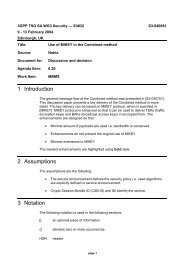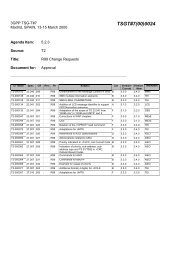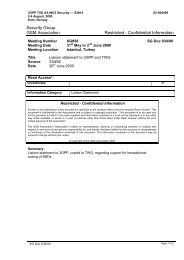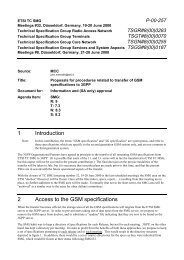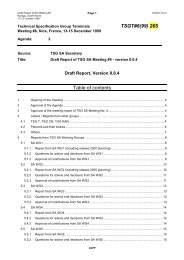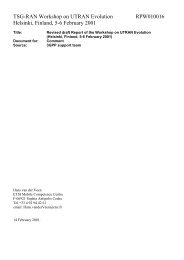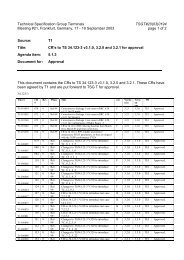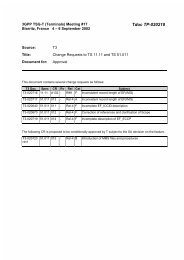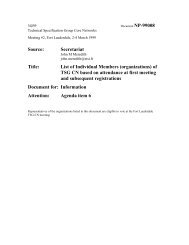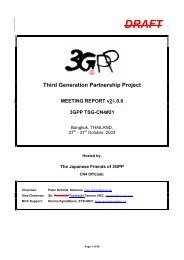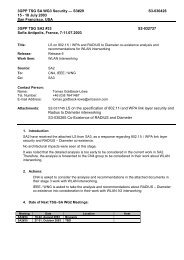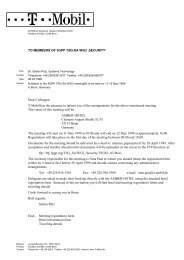1 Introduction 2 Simulation parameters - 3GPP
1 Introduction 2 Simulation parameters - 3GPP
1 Introduction 2 Simulation parameters - 3GPP
Create successful ePaper yourself
Turn your PDF publications into a flip-book with our unique Google optimized e-Paper software.
3 <strong>Simulation</strong> Results<br />
In lower speed scenario (such as speed 5dB or Ec/Ioc < -5dB, the MCS selection is more<br />
likely to be the highest or lowest MCS. Thus the difference between prediction and non-prediction<br />
decreases as expected.<br />
Figure 2 shows the throughput versus Ec/Ioc of a single code for HSDPA with and without the channel<br />
prediction at 30Kmph. Notice that for this medium speed the performance improvement by channel<br />
prediction is 0.5 to 1.0 dB with Ec/Ioc between –5 to 5dB.<br />
Figure 3 shows the throughput versus Ec/Ioc of a single code for HSDPA without the channel<br />
prediction at 120Kmph. For this high-speed case, the channel prediction is not feasible for<br />
corresponding Rayleigh fading. The MCS selection is likely determined by the mean SNR over<br />
Rayleigh fading. However, if both Rayleigh and shadow (lognormal) fading are considered, it might be<br />
possible to predict the fluctuation of shadow fading and hence precede proper MCS selection to<br />
improve the throughput.<br />
Figure 1. Throughput versus Ec/Ioc with and without channel prediction. Total delay=2 HSDPA<br />
frame, 1-path Rayleigh channel, speed = 15kmph, STTD on, HARQ with Chase Combining, ideal<br />
feedback. Max re-transmission=15.<br />
Page 2 of 4



